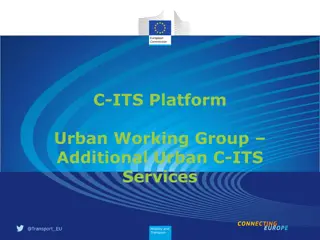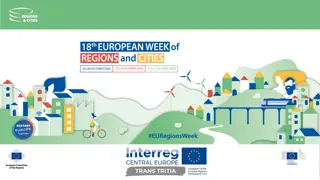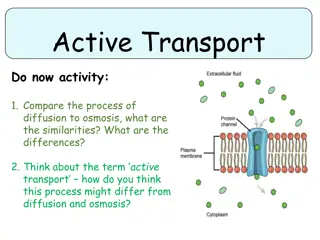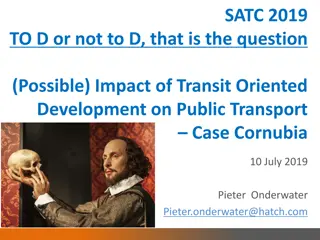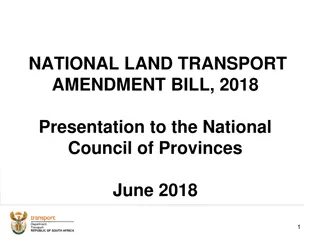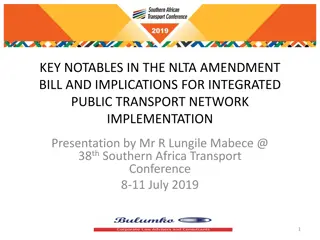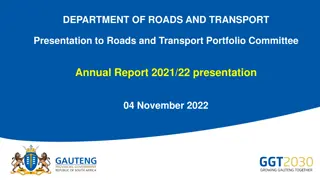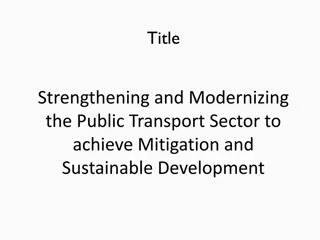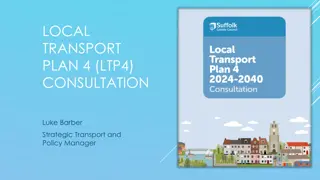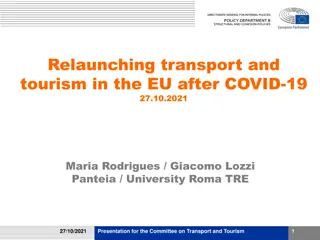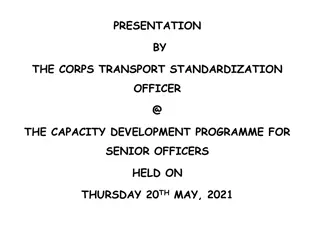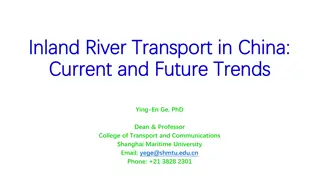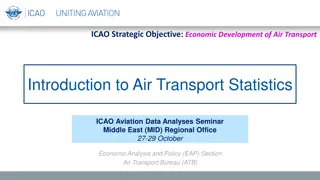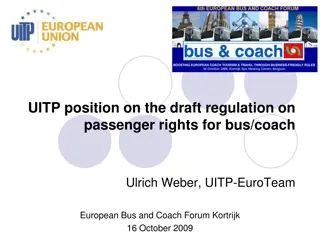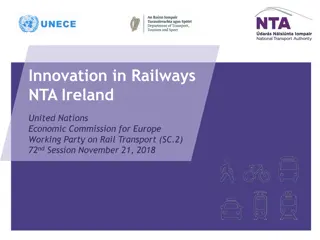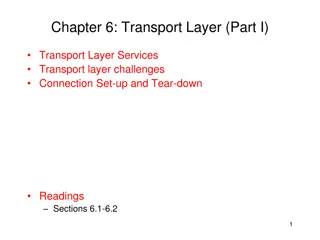Challenges and Strategies in Home-to-School Transport Services
The provision of free home-to-school transport for eligible children, including those with SEND, poses challenges for local authorities in Cambridgeshire and Peterborough. Issues such as rising numbers of SEND pupils, social care clients, transportation costs, and limited drivers are straining existing services. Collaboration between separate transport functions is crucial for addressing these challenges and ensuring efficient service delivery.
Download Presentation

Please find below an Image/Link to download the presentation.
The content on the website is provided AS IS for your information and personal use only. It may not be sold, licensed, or shared on other websites without obtaining consent from the author. Download presentation by click this link. If you encounter any issues during the download, it is possible that the publisher has removed the file from their server.
E N D
Presentation Transcript
Transport Transformation Strategy P E O P L E D I R E C T O R A T E 2022 - 2024
Our Duty The Education Act 1996 places a duty on local authorities to provide free home to school transport for all eligible children, which includes - - children with Special Educational Needs and Disabilities (SEND) those living outside of statutory walking distance beyond 2 miles if below the age of 8 or beyond 3 miles if aged between 8 and 16) some children in receipt of free school meals some Post-16 students children who cannot be reasonably expected to walk to the nearest suitable school because the nature of the route is deemed to be unsafe to walk - - - Local authorities also have discretionary powers to go beyond their statutory duties and to provide discretionary transport for children who are not entitled to free transport. In doing so, they must consult with parents and must act reasonably when determining their travel policy.
Our context - There are currently 2 separate transport functions in Cambridgeshire and Peterborough, governing and providing services for their own local authority area. - Both teams are operating in challenging circumstances and whilst there is some joint work between the two teams - Both teams oversee and provide the eligibility, procurement and delivery of transport services across the policy areas covered within the People Directorate. This is a large span of service delivery and not one that is replicated in many local authorities, especially those of the size of Cambridgeshire.
Policy Areas Home to School Mainstream This includes post 16 provision and fair access protocol placements The Transport Teams in Peterborough provide transport for three areas of policy. Home to School SEND This includes post 16 provision Children s Social Care
6 It is well recognised and recognised that Children s and Adults transport services in both Cambridgeshire and Peterborough are under a huge amount of pressure. The reasons for this are multiple and listed briefly below; - - - - - Rising numbers and increasing complexity of SEND pupils Rising numbers of social care clients who need to be transported to multiple locations in one day Increasing cost of transportation Decreasing marketplace in terms of drivers and taxi operators Changes in education legislation around school operating hours, necessitating changes in routes and leading to increased contract costs. September 22 over 70 contract handbacks with no notice Cambridgeshire.gov.uk Peterborough.gov.uk
Routes Peterborough How many? Solo Routes There are 42 routes out of the 233 (17%) that carry only one child these account for more than 550,000 (12%) of expenditure a year but only 2.5% of the pupils carried on contracted transport. The cost of this is equivalent to more than 13,000 a year for each pupil. In some cases, a solo taxi may be justified, but the high cost of these routes means that these should be the focus of review to determine whether any can be rationalised or shared. Approximately 2,000 pupils (about 5% of the school population) are transported in Peterborough. Nearly a third of pupils who are in receipt of transport are eligible due to their special needs, and a further 28% are post 16 students. The number of pupils with SEN transported has been rising in recent years, by 8%. The need does not seem to be concentrated to any particular geographic location.
Areas of Pressure Eligibility Delivery Cost Growth Cost
Outcomes Cost Model Restructured Service Delivery strategy agreed and adopted Aligning Cambridgeshire and Peterborough and Year 2 unlocking efficiency and innovation Year 1 Transport Policies Route Review Consulted on, reviewed and aligned High cost routes reviewed Year 2 Year 1 Delivery Principles Eligibility Process Reviewed, agreed, understood and Joint processes with partner services embedded (including position on reduced agreed and in place carbon and increased social value Year 1 Year 2 Streamlined procurement Review and amendment of mechanisms for procurement Year 2
Impact Increased capacity in service delivery Reduction in route length Improved access to local education provision Reduction in route cost per pupil Improved efficiency in delivery Improved sustainability (carbon, financial, operational) Decreased risk
PERSONAL TRANSPORT BUDGETS
What is a Personal Travel Budget? A Personal Travel Budget (PTB) is a payment to help you to get your child to school Can I have a PTB? You can apply for a PTB if your child: has Special Educational Needs or Disabilities (SEND), and attends a mainstream school, special school or specialist college, and is eligible for free travel to that setting A PTB will be offered if the value is lower than the cost of transport which the local authority would arrange.
Why should I choose a PTB? Freedom - you decide how to spend the money Flexibility - you can make travel plans that suit your family Cost-saving - you can save money by making travel plans with other parents Peace of mind you know your child s needs best and can make travel plans that are most suited to them Time saving your child s school journey is likely to be shorter and more direct than transport organised by the local authority Contact keep in touch with other parents and the school at pick-up and drop-off time Independence - you can travel with your child if you wish, encouraging and supporting them towards independent travel in the future
What can I use the PTB for? You can use the PTB in any way that ensures your child gets to school / college on time and ready to learn, such as Driving your child to school Paying someone else to take them Car sharing with other parents Paying for a bus pass for your child, or for you to travel with your child Making your own travel plans with a local taxi firm or sharing the cost with other parents Paying for childcare for another child, so you can take your child to school Any combination of these
QUESTIONS and THOUGHTS


